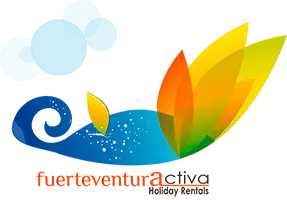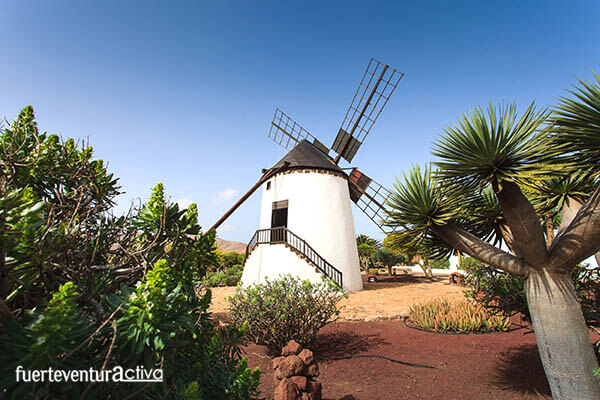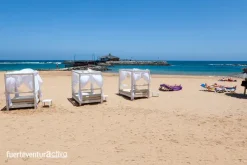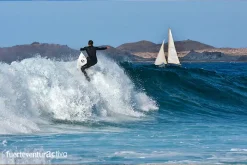FUERTEVENTURA WITH CHILDREN, LIFE IN FUERTEVENTURA, Routes and trails, What to see in Fuerteventura ?
The mills of Fuerteventura
If you are visiting Fuerteventura for the first time, or you are looking for information about the island, and you have landed on this page, you will surely have been surprised to see the number of mills that stand all over the majorera geography. We are still amazed to admire these giants, mute witnesses of a flourishing past, and we are saddened when we see some of them ravaged by time.
Today we want to get closer to that treasure of our history. Before we tell you why mills were built on Fuerteventura, we have to point out that there are several types of mills on this island. On the one hand, there are those that serve to extract water from the subsoil. It’s the Chicago windmills, those metal ones with lots of blades, that give you the feeling of being in an American Western movie. On the other hand, there are the flour mills, which are the ones we bring to this blog today.
Within the flour mills of Fuerteventura there are two types of mills: The mills and the female mills or “molinas”
Fuerteventura a land of cereals
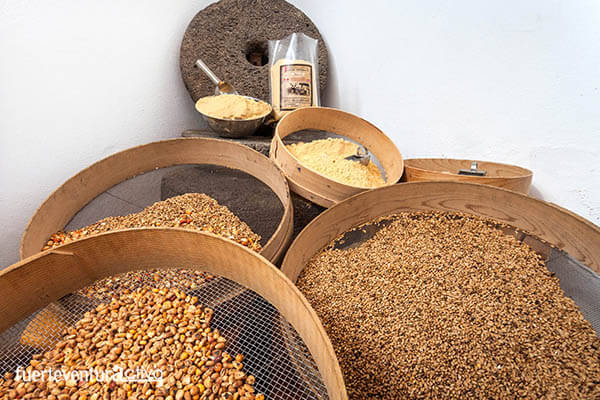
After the conquest, in the early fifteenth century, Fuerteventura was colonized by peninsulars, who settled in the most fertile valleys of the island. Due to the scarce rainfall and the characteristics of the Fuerteventura terrain, the economy of the island was mainly based on rain-fed agriculture. Wheat, white barley, Roman barley, and rye were sown.
If we could travel to the past, the vision we would have of Fuerteventura, back then, would be very similar to the present one of the Castilian lands. Until the 18th century, the transformation of cereal into flour and gofio was carried out on a small scale, with hand mills and bakers. It was at the end of that century when, due to the increase in population, the large mills began to be built on Fuerteventura.
The Mills of Fuerteventura

The first mills to be built on the island were the tower type, the best known by all. They are circular in shape and truncated cone. They usually consist of three floors. The first was for storage, the second was where the grinding mechanism was, while on the third floor was the main gearbox of the mill.
Traditional mills are finished off with an irregular conical or pyramid-shaped wooden roof. This deck is mobile. It can be oriented to the wind direction by means of a rudder, located on the opposite side of the blades. This type of mill, due to its large dimensions and having 4 or 6 blades, used to be built in the highest areas of the villages, under the protection of the trade winds.
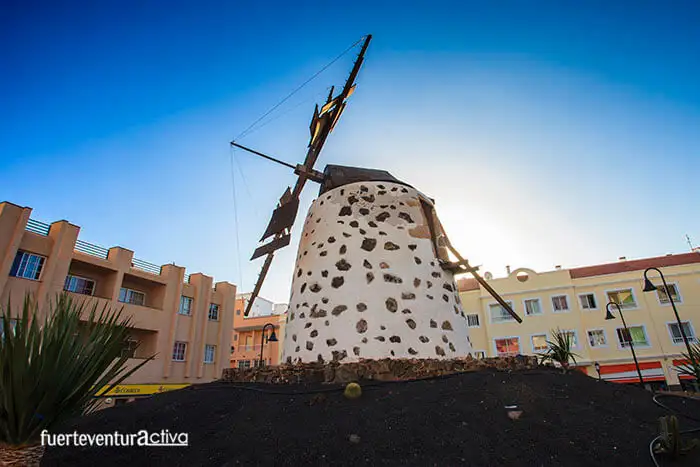
Despite not being officially recognized, the truth is that the silhouettes of the mills of Fuerteventura, have become one of the symbols and signs of identity more representative of Fuerteventura. There are still several tower mills on Fuerteventura, some, like the one in Antigua or the one in Tiscamanita, can be visited.
Others have been restored by their owners or by public institutions. Among these we can highlight the mills of Villaverde, El Roque, Lajares, Valle de Santa Inés, Tefía, el Durazno, Era de la Corte,. . .By the way, El Molino de Tefía is one of the most unique in Fuerteventura, as it is the only one left standing with 6 blades. The greater the number of blades, the stronger the rotor.
Las Molinas de Fuerteventura
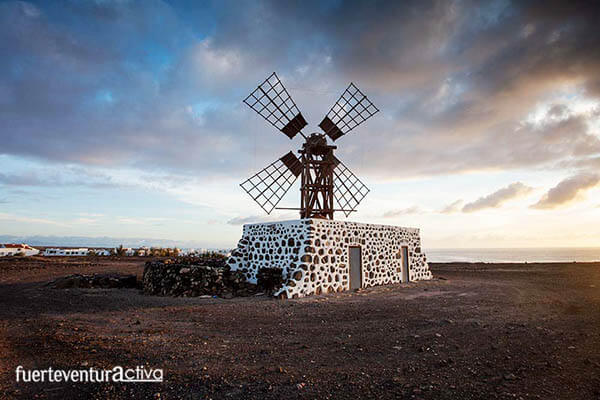
These mills are one of the most unique flour mills in the Canary Islands. The first thing that catches your eye is the shape and number of blades. The mills are usually rectangular, single storey and have between 4 and 12 blades (always in even numbers)
The molinas emerged in La Palma in the second half of the 19th century. They were invented by Isidoro Ortega Sánchez. The molinas we can see in Fuerteventura are adaptations made by local artisans of the Ortega system mills. They worked in a very similar way to the traditional mill, but with simpler machinery, and a different exterior appearance.
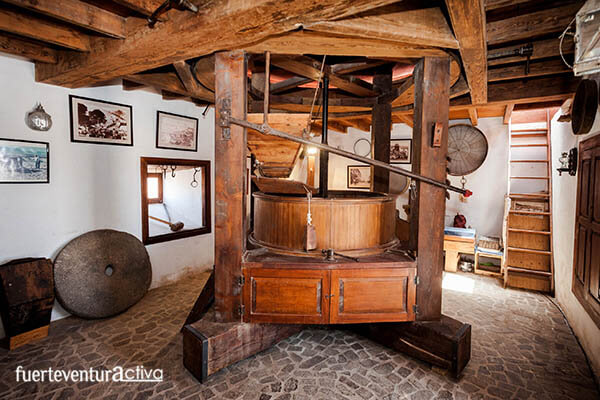
Its main innovation was that it brought together the milling and grain handling activities on a single floor, which was an advantage over the mill, where the miller had to move constantly between the two or three floors of the building. Another characteristic of the molinas is its ‘portability’. The mill allowed its owners, if necessary, to move the tower and the grinding machinery to a new building at a given time.
There are still some mills standing, such as the one in Puerto Lajas, Lajares, “Manolo Hierro” in Corralejo, or the unique one in Valles de Ortega with 12 blades.
Frequently Asked Questions about the Mills and Molinas of Fuerteventura:
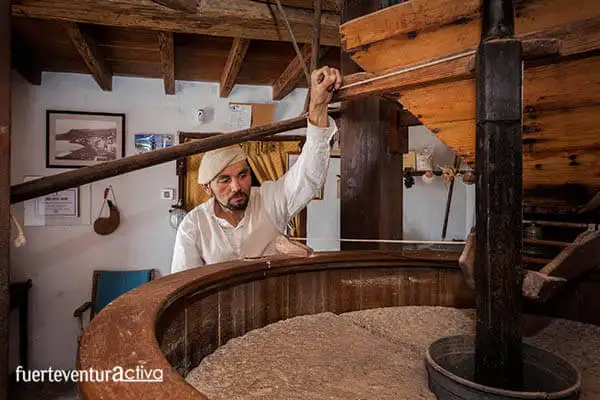
Is it possible to visit any molina?
If you really want to see a windmill, then you have to go to the Asomada. There, Francisco Cabrera, a true enthusiast of gofio, the mills and ethnographic heritage is the only miller in the Canary Islands, and therefore in the world, who still produces handmade gofio in his Molina de la Asomada. It’s a show you can’t miss.
How many windmills and mills are there on Fuerteventura?
Fuerteventura, with a total of 23, is the island that has the most flour mills protected. Since the 1990s, these structures have been considered B. I. C. (Bien de Interés Cultural).
Who were the owners of the mills and molinas?
The mills were joint infrastructures, belonging to the people, and the miller was paid in spices either grain or flour, which he could then sell. However, the mills were owned by a family and their management was similar to any other business.
Fuerteventura6 Fuerteventura5 Fuerteventura4
